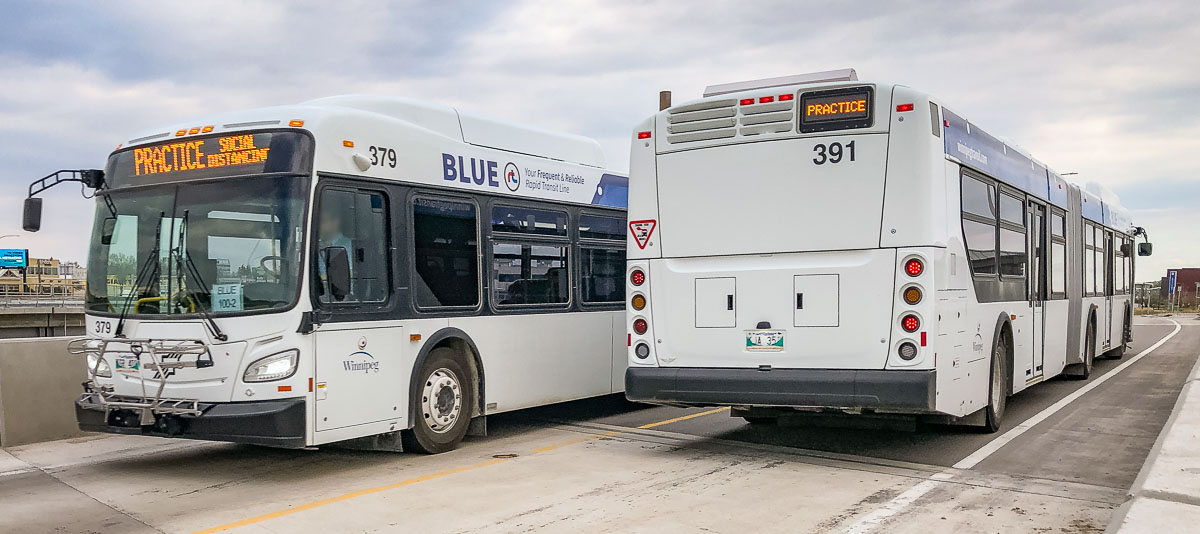
On February 10th, the Government of Canada announced $14.9 billion for public transit projects over the next eight years, including permanent funding of $3 billion per year beginning in 2026. Prime Minister Justin Trudeau and Minister of Infrastructure and Communities Catherine McKenna were joined for the announcement by Canada Infrastructure Bank chair Tamara Vrooman and Edmonton Mayor Don Iveson.
This permanent, long-term capital funding will provide new subway lines, light-rail, streetcars, electric buses, cycling paths and improved rural transit. The announcement did not, however, mention inter city rail or motorcoach services. We hope that a decision and announcement regarding investment to improve service frequencies along in VIA Rail’s Quebec-Windsor corridor will follow later in the spring.
The funding includes $5.9 billion in short-term funding for “shovel-ready” projects that will be disbursed on a project-by-project basis, starting this year. While the list of such projects was not started, we expect several light rail projects at an advanced stage of planning, including Gatineau, Hamilton, and Calgary’s Green Line, plus the Quebec tramway and Winnipeg’s rapid bus network will be under consideration.
For decades, governments have been told by municipalities, transit authorities, and Transport Action that permanent and stable funding is essential to allow for good and long-term project planning and delivery, and thus better use of the tax dollars invested. Don Iveson, Mayor of Edmonton, welcomed the announcement on behalf of the Federation of Canadian Municipalities Big City Mayors’ Caucus:
"Today’s announcement is a landmark investment in the post-Covid recovery Canadians need. Investing in transit creates jobs, shortens commutes, reduces emissions. Transit is the backbone of livable, competitive cities. Permanent transit funding offers cities long-term predictability to deliver transformational system expansion and drive durable economic growth across the country."
This new long-term funding builds upon $13 billion distributed to more than 1,300 public transit and active transportation projects over the past six years, mostly flowed through the provinces and the Investing in Canada Infrastructure Program. Although the new program design is still being finalized, it appears at least some of the new funding will flow directly, without requiring municipalities to wait for provincial approval or matching dollars.
A subsequent announcement earmarked $2.75 billion of the first $5.9 billion in new funding, over five years, for the electrification of transit and school bus fleets across the country, making good on the government’s pledge to fund 5,000 zero-emission buses and complementing $1.5bn already made available to municipalities through the Canada Infrastructure Bank.
This significant investment will be a boost to the electric bus industry in Canada, including Nova Bus in Saint-Eustache, Lion Electrique in Saint-Jérôme, GreenPower in Vancouver and New Flyer in Winnipeg.
The acknowledgement of rural and indigenous transit priorities in the funding announcement is particularly welcome news, reflecting Transport Action’s ongoing advocacy message that dependable public transport must be available to all Canadians as a matter of personal safety and to promote equal access to opportunity. Unlike previous capital funding programs, which have often been linked to existing ridership, the new Permanent Transit Fund will be able to address transport deserts and close gaps in services.
Infrastructure Canada has already begun holding consultations on the rural aspect of the new program with regional transit agencies and interested parties, and Transport Action has contributed recommendations through that process, including noting the opportunity to capitalize on the Coast-to-Coast Bus Coalition proposal to rapidly expand rural service coverage and build a “better normal” as Canada recovers from the Covid-19 pandemic.